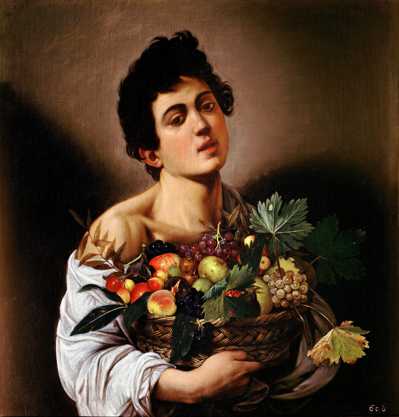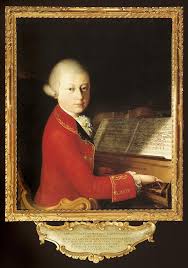모건라이브러리 2026: 카라바지오, 모차르트 특별전
2026 Exhibitions at the Morgan
Caravaggio’s “Boy with a Basket of Fruit” in Focus
January 16 through April 19, 2026
Come Together: 3,000 Years of Stories and Storytelling
January 30 through May 3, 2026
Wolfgang Amadeus Mozart: Treasures from the Mozarteum Foundation of Salzburg
March 13 through May 31, 2026
Friends Who Came to See Me: Drawings from John Ashbery’s Collection
May 1 through October 25, 2026
Hujar: Contact
May 22 through October 25, 2026
Tarot! Renaissance Symbols, Modern Visions
June 26 through October 4, 2026

Caravaggio (Michelangelo Merisi). Boy with a Basket of Fruit, c.1593. Wikipedia
The Morgan Library & Museum Announces 2026 Exhibitions New York, NY (May 20, 2025) – The Morgan Library & Museum is pleased to announce its schedule of exhibitions opening in the winter, spring, and summer of 2026.
These include the extraordinary loan of Caravaggio’s Boy with a Basket of Fruit from the Galleria Borghese in Rome; an exhibition featuring artworks from across all of the Morgan’s collections that explores how stories and storytelling shape our world; an unprecedented collaboration with the Mozarteum Foundation of Salzburg that presents the life and career of Wolfgang Amadeus Mozart, featuring objects on view in America for the first time; an exhibition featuring drawings by the poet John Ashbery and his artist friends; a focused look at photographer Peter Hujar through his contact sheets; and a double-gallery exhibition that explores the origins of Tarot in Renaissance Italy and its ongoing relevance as a source of inspiration for twentieth- and twenty-first-century artists.
Caravaggio’s “Boy with a Basket of Fruit” in Focus January 16 through April 19, 2026
This exhibition celebrates the extraordinary loan from the Galleria Borghese in Rome of the painting Boy with a Basket of Fruit, an important early work by Michelangelo Merisi, known as Caravaggio (15711610). Trained in his native Lombardy, Caravaggio brought to Rome a tradition of naturalism that stretched back to Leonardo da Vinci’s work in Milan. He combined this tradition, however, with a revolutionary approach to painting that shattered the illusion of art and instead celebrated the artifice of the studio.
With his parted lips, flushed ears, and shirt slipping from his shoulder, the Boy with a Basket of Fruit was far from the idealized figures typically depicted in Roman painting at the time. Presented with remarkable frankness, the model seems to be offered to us for examination, akin to the overripe fruit he holds. The exhibition juxtaposes this remarkable work with some precedents for its naturalism, including earlier paintings from Milan and by Caravaggio’s slightly older contemporary Annibale Carracci. The installation will also include a selection of works that document the powerful impact Caravaggio had on Roman art. It concludes with Gianlorenzo Bernini’s portrait drawing of Scipione Borghese, the early owner of the Boy with a Basket of Fruit painting and the collector largely responsible for the Galleria Borghese. Organized by John Marciari, Charles W. Engelhard Curator, Department Head of Drawings and Prints, and Director of Curatorial Affairs.
Come Together: 3,000 Years of Stories and Storytelling January 30 through May 3, 2026
Combining diverse artworks from across the Morgan’s collections and some exceptional loans, Come Together: 3,000 Years of Stories and Storytelling explores how stories shape our world. The exhibition showcases over 130 objects, including drawings, paintings, photographs, printed books, manuscripts, artifacts, comics, and more, fostering fresh encounters with beloved works of art and literature and presenting exciting new acquisitions. Throughout, Come Together unites modern and historical artworks, underscoring conceptual, thematic, and visual links between them and stimulating new interpretations and imaginative associations.
Come Together traces a trajectory from the universal to the specific, offering new perspectives on the cultural transmission of stories and their overall importance. The first section, “Belief and Belonging,” considers origin stories, epics, legends, and myths, while the second, “Shaping Stories,” sheds light on the creative process through the presentation of drafts, typescripts, and sketches, including a heavily annotated page of James Joyce’s Ulysses and Jean de Brunhoff’s earliest drawings of the perpetually popular pachyderm Babar. The heart of the exhibition, “Picture This!”

Giambettino Cignaroli, Mozart in Verona, Private Collection.
Wolfgang Amadeus Mozart: Treasures from the Mozarteum Foundation of Salzburg March 13 through May 31, 2026
In an unprecedented collaboration, the Mozarteum Foundation of Salzburg and the Morgan Library & Museum have partnered to tell the story of the life and career of Wolfgang Amadeus Mozart. Objects from the Salzburg collections will cross the Atlantic for the first time, including Mozart’s own clavichord and violin, as well as famous portraits, letters, and personal objects of Mozart and his family. Wolfgang Amadeus Mozart: Treasures from the Mozarteum Foundation of Salzburg also draws from the Morgan’s extensive collections of music manuscripts, letters, and first editions that feature the forms in which Mozart was preeminent: symphony, piano concerto, and opera.
Evoking the cities, homes, and people that shaped the composer, the exhibition highlights Mozart’s many travels, continual quest for employment and renown, family tensions, and constant creative output amid frequent illness and other challenges. It also illustrates Mozart’s existence under aristocratic patronage, a context both foreign and familiar to modern viewers. The exhibition focuses on the two family chapters of Mozart’s life: his youth with his father, Leopold, and sister Nannerl in Salzburg, and his adult life with his wife, Constanze, in Vienna. After Mozart’s death in 1791, Nannerl and Constanze returned to Salzburg, where they, with the composer’s two sons, preserved and built his legacy. Their collection became the foundation of the modern-day Mozarteum.
In the nineteenth century, partly through Beethoven’s influence, Mozart was reinvented as a foundation of the emerging idea of “classical music.” This exhibition explores how Mozart forged deep connections with listeners during his life and examines his enduring influence after his death, stemming from his posthumous reinvention. Organized by Robinson McClellan, Associate Curator of Music Manuscripts and Printed Music at the Morgan, in collaboration with Deborah Gatewood, Armin Brinzing, and Linus Klumpner of the Mozarteum.





